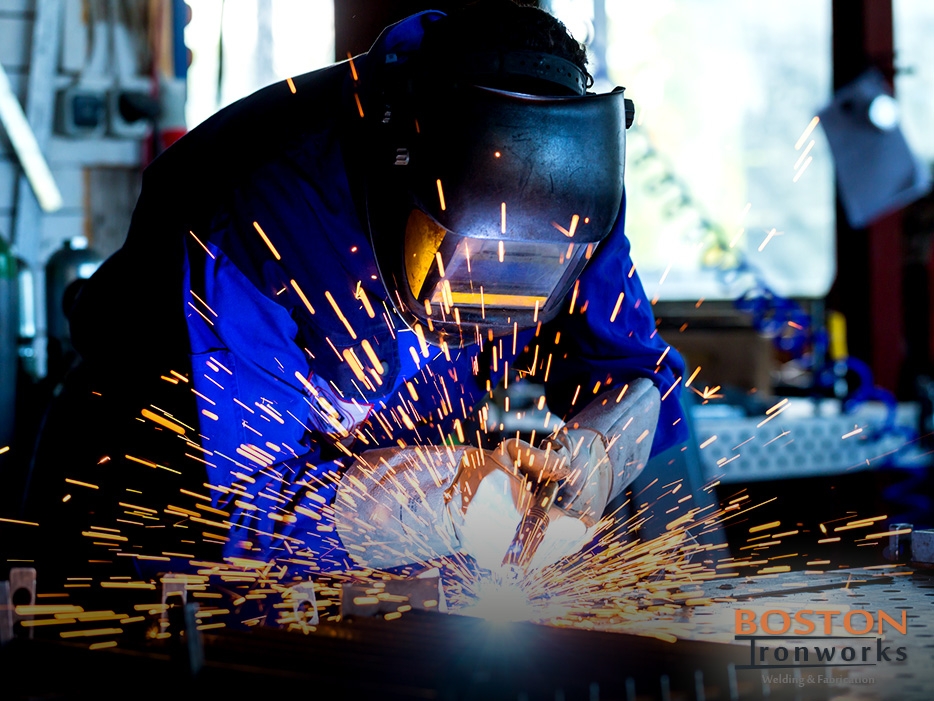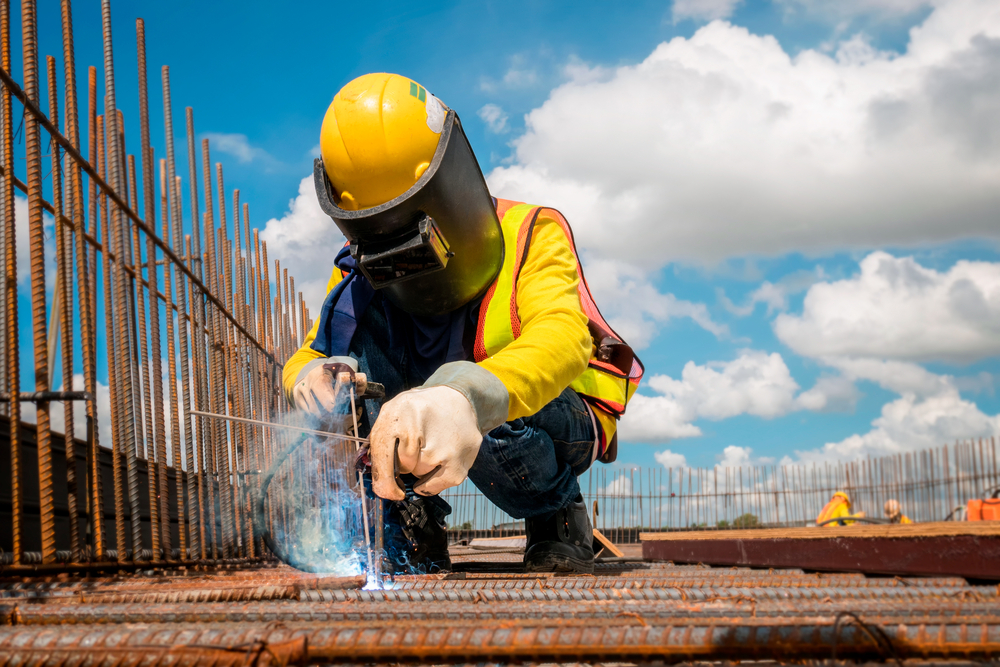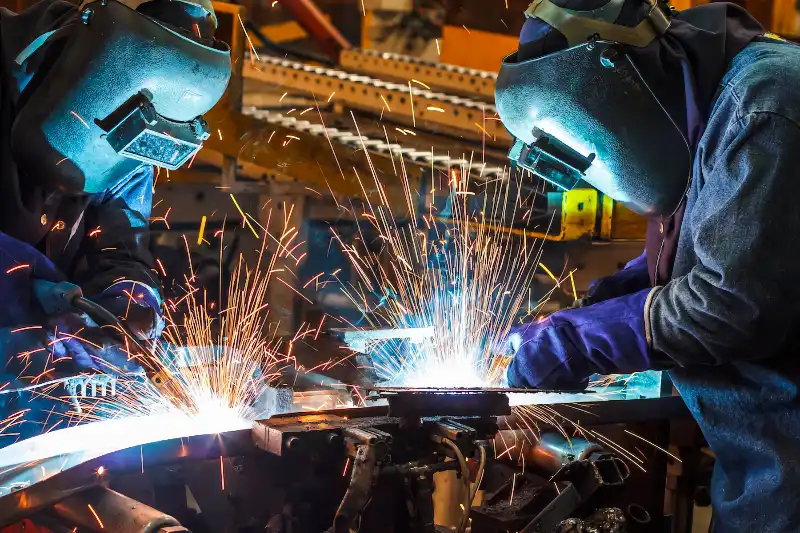Common Welding Repair Work Issues and How to Address Them Efficiently
Welding fixings usually experience a series of concerns that can endanger the honesty of the last product. Common troubles consist of poor penetration, porosity, and misalignment, among others. Each defect offers unique difficulties that need specific approaches for resolution. Comprehending these problems is important for welders intending to enhance their end results and abilities. This conversation will certainly explore these usual welding repair issues and reliable techniques to resolve them.
Insufficient Penetration
Poor infiltration happens when the weld metal fails to totally fuse with the base material, leading to weak joints and potential structural failings. This issue usually stems from inadequate warmth input, inaccurate electrode angle, or incorrect welding rate. Welders might come across poor penetration because of a mistake of the needed parameters for a specific material thickness or kind. Additionally, contamination on the base material's surface area can prevent effective bonding, aggravating the problem. To address inadequate infiltration, welders need to guarantee ideal settings on their tools and keep a tidy job surface area. Normal assessment of welds is suggested to identify any type of deficiencies early, enabling prompt adjustments and the avoidance of compromised structural stability in bonded assemblies.
Porosity
Porosity is a common flaw in welded joints that shows up as small gas bubbles trapped within the weld steel. This flaw can endanger the stability of the weld, causing decreased toughness and potential failure under tension. Belgrade Fabrication. Porosity usually arises from contamination, dampness, or inappropriate welding techniques, which permit gases to escape into the molten weld swimming pool. To deal with porosity, welders should assure proper surface preparation, keep a clean workplace, and make use of appropriate welding parameters. Furthermore, choosing the best filler material and shielding gas can minimize gas entrapment. Normal evaluation and screening of welds can aid determine porosity early, ensuring timely restorative activities are taken, thus protecting the high quality and integrity of the welded structure
Misalignment
Imbalance in welding can develop from various aspects, consisting of incorrect configuration and thermal expansion. Understanding the source is important for efficient resolution. Several correction techniques are readily available to realign elements and ensure structural integrity.
Causes of Misalignment
Welding misalignment often comes from a range of underlying concerns that can jeopardize structural stability. One primary reason is incorrect fit-up of elements prior to welding, which can lead to gaps and uneven surfaces. Variants in thermal development throughout the welding procedure can additionally result in distortion, especially if the products being joined have different coefficients of expansion. Furthermore, poor fixturing and clamping might fail to hold components safely in position, bring about motion throughout welding. Inadequately maintained tools, consisting of welding makers and devices, may present inconsistencies in the weld bead, further contributing to misalignment. Operator error, stemming from inadequate training or experience, can additionally play a considerable duty in developing misaligned welds.

Adjustment Strategies Readily Available
Addressing imbalance effectively needs a mix of corrective methods tailored to the particular problems at hand. One typical technique is the use of jigs or components to hold elements in the appropriate position throughout welding, making certain regular placement. In addition, pre-heating the products can aid minimize distortion and improve fit-up. For significant imbalance, mechanical realignment strategies, such as utilizing hydraulic jacks or clamps, can be used to remedy the position before welding. Post-weld heat therapy may likewise be needed to relieve tensions triggered by misalignment. Mindful examination and change during the arrangement stage can avoid imbalance concerns from becoming considerable troubles, advertising a smoother welding process and boosting general architectural honesty.
Distortion
Distortion is a typical challenge in welding that can emerge from numerous factors, consisting of unequal home heating and cooling. Recognizing the reasons for distortion is crucial for implementing effective prevention strategies. Resolving this problem not only boosts architectural honesty but likewise enhances the overall top quality of the weld.
Reasons for Distortion
When based on the extreme warm of welding, materials usually go through changes that can cause distortion. This phenomenon primarily emerges from thermal development and contraction throughout the welding procedure. As the weld area heats up, the material expands; upon air conditioning, it gets, which can create interior stresses. Furthermore, uneven home heating across a work surface can intensify these stress and anxieties, causing bending or bending. The kind of product additionally plays a substantial duty; metals with varying thermal conductivity and coefficients of expansion might react differently, causing unforeseeable distortions. Inadequate joint design and insufficient fixturing can add to imbalance during welding, boosting the likelihood of distortion. Recognizing these causes is important for reliable welding repair and avoidance methods.
Avoidance Techniques
Efficient avoidance techniques for distortion throughout welding concentrate on managing heat input and making certain correct joint style. Keeping a regular warm input assists to reduce thermal expansion and tightening, which can cause distortion. Making use of methods such as pre-heating the workpiece can likewise reduce the temperature level slope, advertising consistent home heating. In addition, picking proper joint designs, such as T-joints or lap joints, can improve stability and decrease anxiety concentrations. Implementing correct fixturing to secure the work surfaces in position additionally help in keeping alignment during the welding procedure. Staggered welding series can disperse warm a lot more uniformly, preventing local distortion. By applying these techniques, welders can considerably lower the likelihood of distortion and enhance the overall high quality of their welds.
Fracturing
Cracking is an usual issue experienced in welding repair services, often resulting from various elements such as improper cooling prices, material selection, or poor joint preparation. The incident of cracks can significantly compromise the stability of the weld, bring about prospective failures during procedure. To resolve this issue, welders need to first assess the source, guaranteeing that products are suitable and suitably picked for the specific application. Furthermore, controlling the air conditioning rate during the welding procedure is necessary; fast cooling can induce anxiety and cause breaking. Correct joint design and prep work also add to minimizing the risk. Executing these approaches can enhance weld high quality and longevity, eventually minimizing the likelihood of cracking in completed weldments.

Incomplete Blend
A considerable issue in welding repairs is insufficient fusion, which takes place when the weld metal does not properly bond with the base product or previous weld passes - Belgrade. This issue can cause weaknesses in the joint, possibly jeopardizing the stability the original source of the welded framework. Factors adding to incomplete combination include not enough warm input, incorrect welding technique, and contamination of the surface areas being joined. To resolve this problem successfully, welders must assure correct pre-weld cleaning and surface area preparation, along with adjust their welding specifications to accomplish sufficient penetration and blend. Routine examination during the welding procedure can additionally assist recognize insufficient fusion early, enabling for prompt restorative measures to improve the general top quality of the weld
Overheating
While welding repair work can improve architectural integrity, overheating provides a substantial difficulty that can lead to product degradation. Excessive heat during welding can modify the mechanical buildings of steels, leading to lowered toughness, enhanced brittleness, and warping. This phenomenon is particularly essential in high-stress applications where structural read more reliability is vital. Recognizing getting too hot can include visual assessments for staining or distortion, along with keeping an eye on temperature throughout the welding process. To minimize the risks associated with getting too hot, welders should utilize appropriate techniques, such as regulating warm input, changing traveling rate, and using appropriate filler materials. Furthermore, carrying out pre- and post-weld heat therapies can assist bring back material residential properties and enhance the overall high quality of the repair work, making certain long-lasting performance and safety.
Regularly Asked Concerns
What Are the Common Indicators of a Welding Flaw?

How Can I Check My Welds for Top quality?
To evaluate welds for quality, one can use visual evaluations, ultrasonic screening, and radiographic approaches. Each technique ensures structural stability, identifies defects, and verifies adherence to defined standards, inevitably improving the integrity of the bonded joints.
What Security Precautions Should I Take While Welding?
When welding, one must prioritize safety and security by using proper personal protective devices, making sure appropriate air flow, securing flammable materials away, keeping a clean office, and understanding environments to avoid injuries and accidents.
Can I Repair a Weld Without Renovating the Entire Joint?
Repairing a weld without redesigning the whole joint is feasible, depending on the damages (Belgrade Fabrication). Strategies such as grinding, adding filler product, or using a welding procedure can successfully resolve specific imperfections while maintaining the surrounding structure
What Equipment Are Vital for Reliable Welding Services?
Important tools for efficient welding repair services consist of a welding equipment, cable brush, grinder, protective gear, clamps, and filler products. Each tool plays an essential duty in making certain high quality and security during the repair service process. Porosity generally emerges from contamination, wetness, or incorrect welding strategies, which allow gases to leave right into the liquified weld swimming pool. Improperly kept equipment, consisting of welding equipments and devices, might present disparities in the weld bead, more contributing to misalignment. When subjected to the extreme warmth of welding, materials frequently go through her comment is here changes that can lead to distortion. Fracturing is a common issue experienced in welding repairs, usually resulting from numerous variables such as inappropriate air conditioning rates, product option, or inadequate joint prep work. A substantial concern in welding repairs is incomplete blend, which takes place when the weld metal does not properly bond with the base material or previous weld passes.